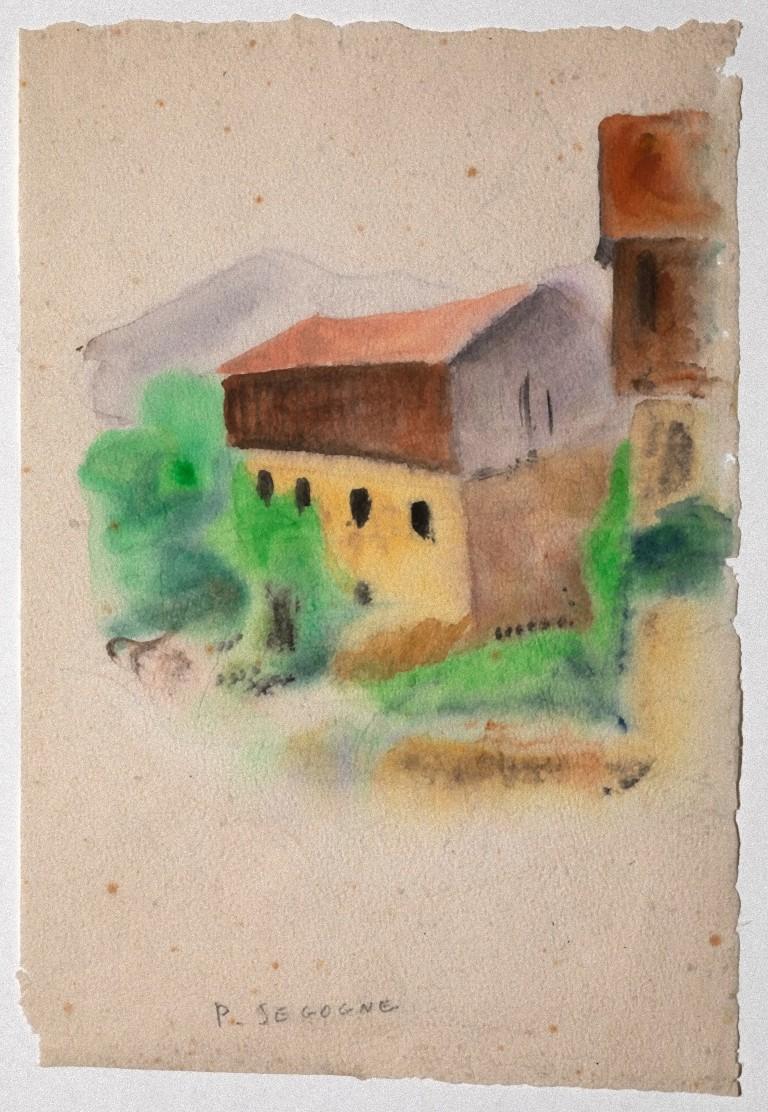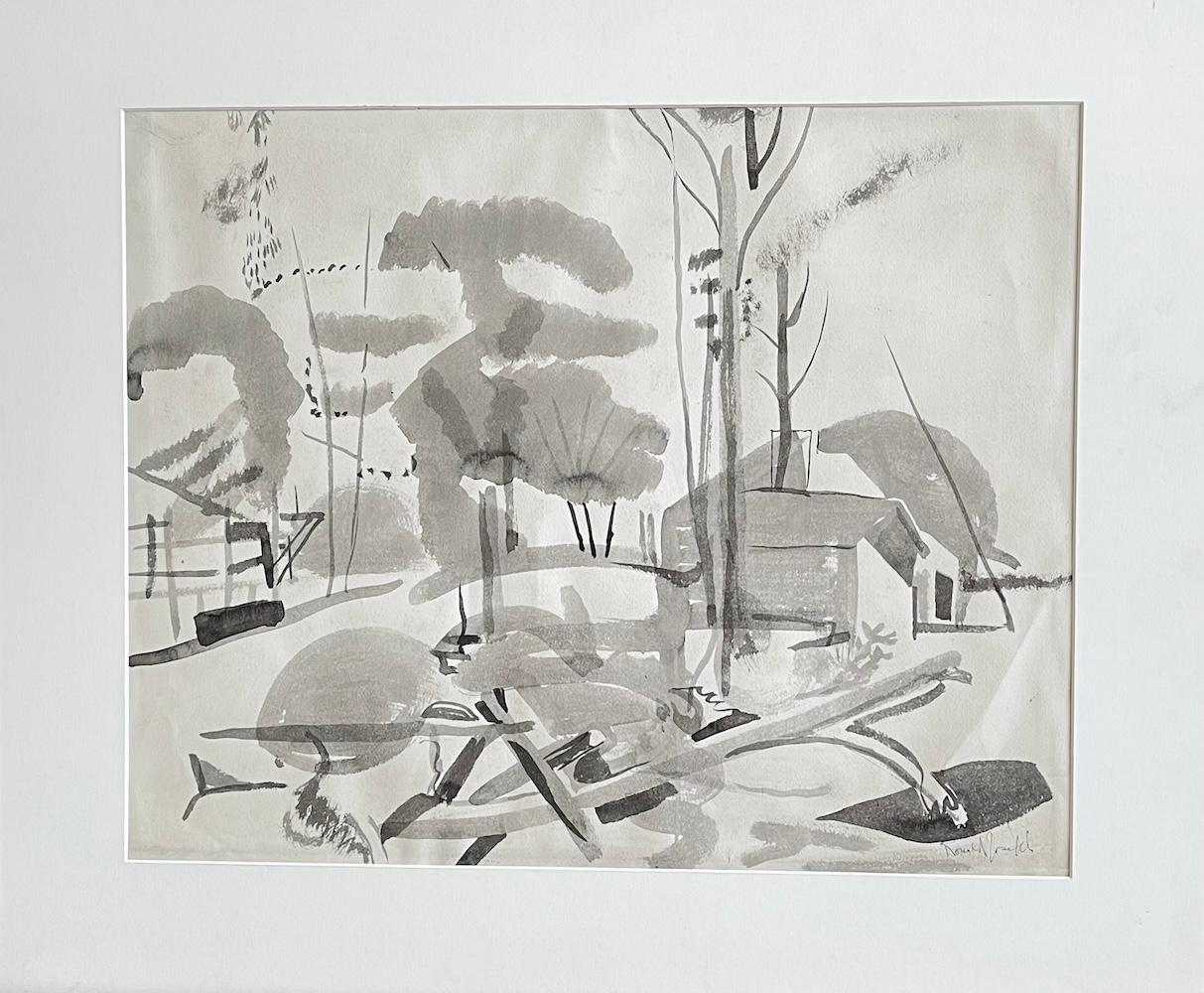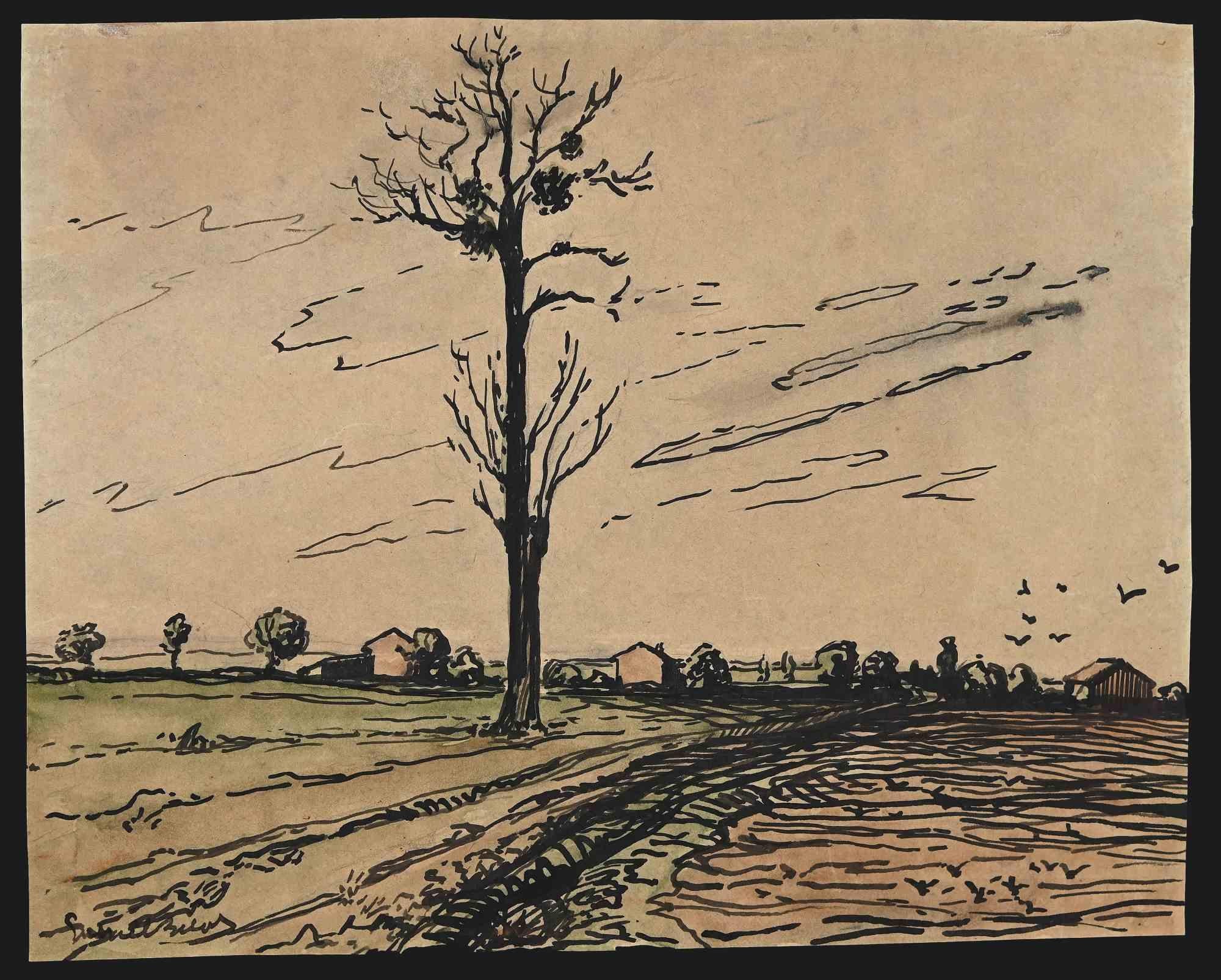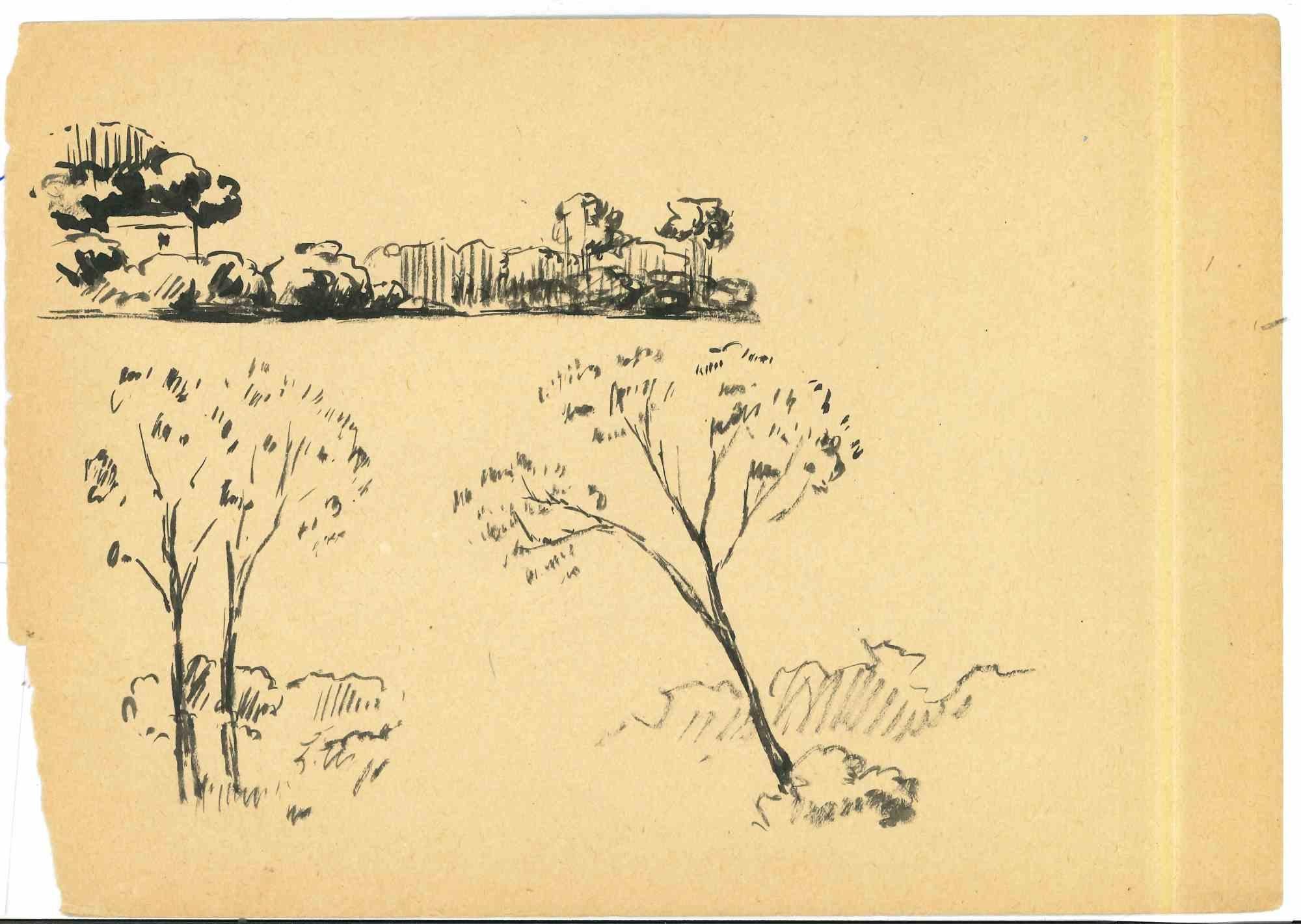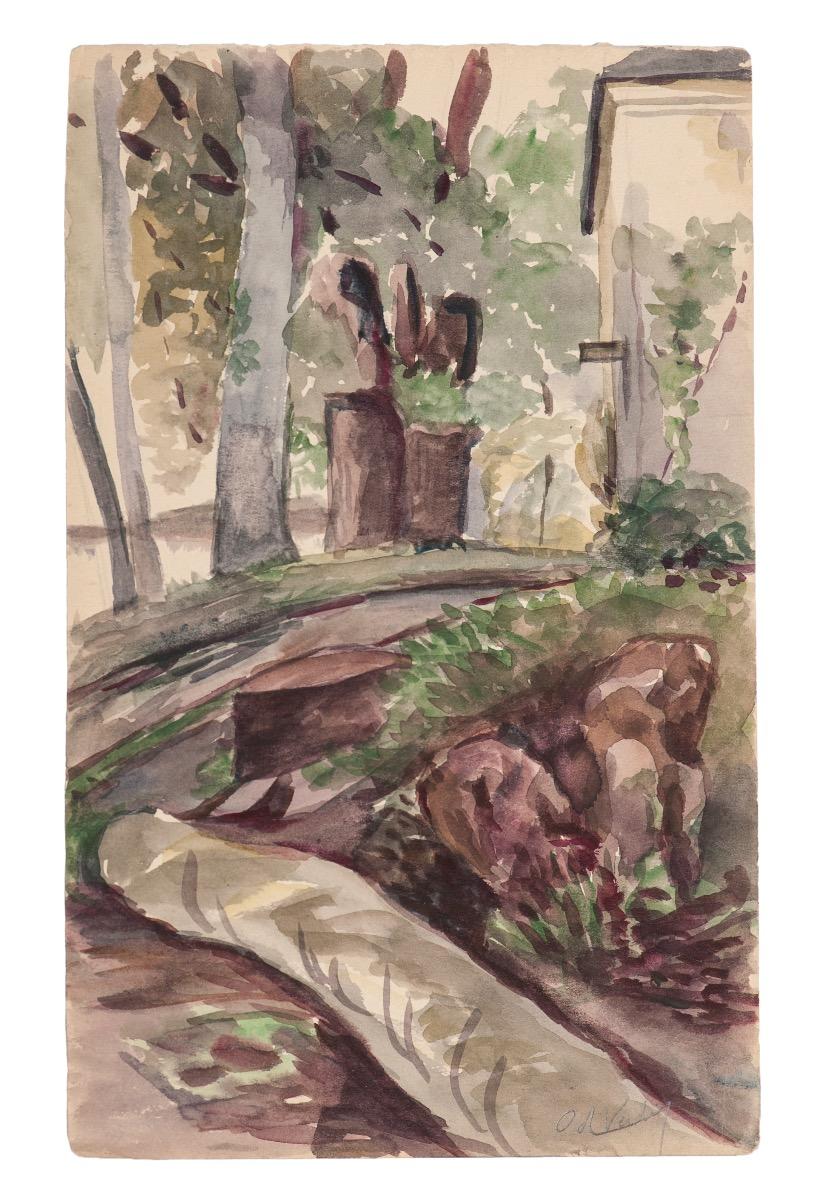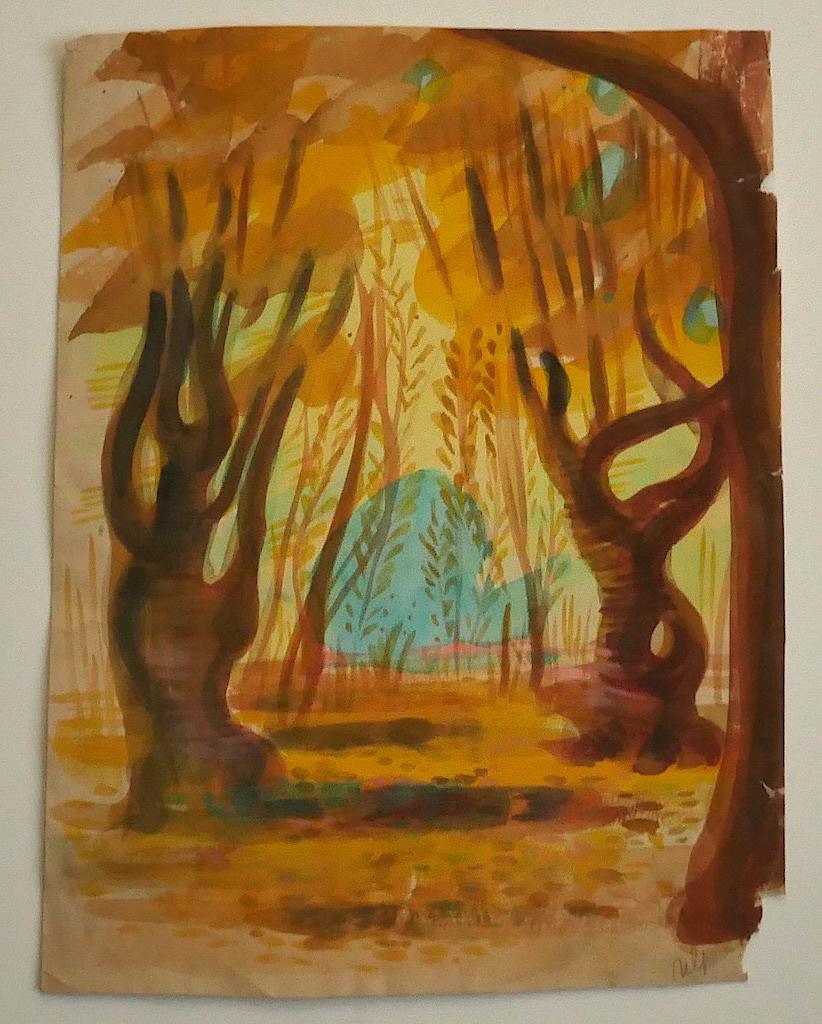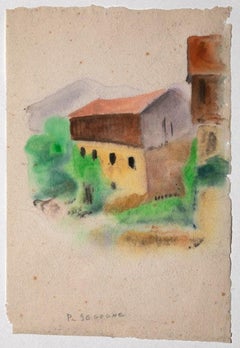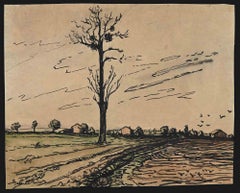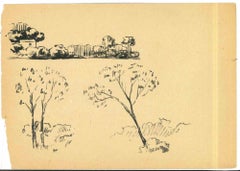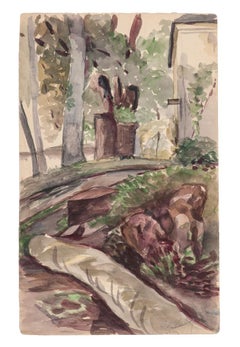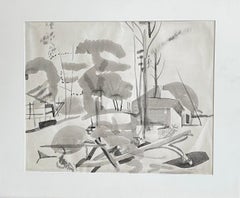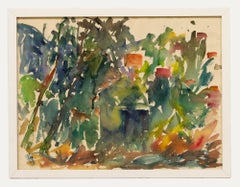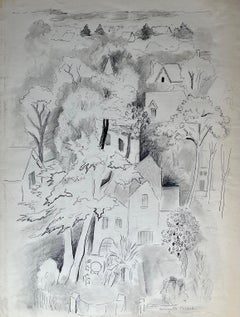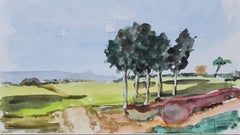Items Similar to Houses in the Wood - Original Ink and Watercolor - Mid-20th Century
Want more images or videos?
Request additional images or videos from the seller
1 of 2
UnknownHouses in the Wood - Original Ink and Watercolor - Mid-20th CenturyMid-20th Century
Mid-20th Century
$331.97
£248.44
€280
CA$457.98
A$509.29
CHF 267.49
MX$6,226.58
NOK 3,333.18
SEK 3,142.29
DKK 2,131.50
About the Item
Houses in the wood is an original watercolor and china ink drawing on ivory-colorated paper, realized by Anonymous French Artist of the 20th Century.
In very good conditions.
Illegible signature on the lower margin.
- Creation Year:Mid-20th Century
- Dimensions:Height: 7.49 in (19 cm)Width: 8.47 in (21.5 cm)Depth: 0.04 in (1 mm)
- Medium:
- Movement & Style:
- Period:
- Framing:Framing Options Available
- Condition:Insurance may be requested by customers as additional service, contact us for more information.
- Gallery Location:Roma, IT
- Reference Number:Seller: M-1171991stDibs: LU65037851812
About the Seller
4.9
Platinum Seller
Premium sellers with a 4.7+ rating and 24-hour response times
1stDibs seller since 2017
7,682 sales on 1stDibs
Typical response time: 3 hours
- ShippingRetrieving quote...Shipping from: Grasse, France
- Return Policy
Authenticity Guarantee
In the unlikely event there’s an issue with an item’s authenticity, contact us within 1 year for a full refund. DetailsMoney-Back Guarantee
If your item is not as described, is damaged in transit, or does not arrive, contact us within 7 days for a full refund. Details24-Hour Cancellation
You have a 24-hour grace period in which to reconsider your purchase, with no questions asked.Vetted Professional Sellers
Our world-class sellers must adhere to strict standards for service and quality, maintaining the integrity of our listings.Price-Match Guarantee
If you find that a seller listed the same item for a lower price elsewhere, we’ll match it.Trusted Global Delivery
Our best-in-class carrier network provides specialized shipping options worldwide, including custom delivery.More From This Seller
View AllCountry Houses - Original Watercolor on Paper by Pierre Segogne - 1950s
By Pierre Segogne
Located in Roma, IT
Country Houses is an original Modern Artwork realized in the half of the 20th Century in France by Pierre Segogne (? - 1958).
Original watercolor on paper.
Hand-signed on the lowe...
Category
1950s Modern Figurative Drawings and Watercolors
Materials
Watercolor
French Countryside - Original China Ink Drawing and Watercolor - 1940s
Located in Roma, IT
French Countryside Landscape is an original China Ink drawing and watercolor realized by a french artist of the 20th century.
Good condition on a brown paper.
Illegible signature.
Category
Early 20th Century Modern Figurative Drawings and Watercolors
Materials
Ink, Watercolor
Landscape - Original Drawing - Mid 20th Century
Located in Roma, IT
Landscape is an original drawing in Black Marker realized in the mid-20th Century by an unknown artist.
Good Conditions except for fo some folding and cut-away.
The artwork is depi...
Category
Mid-20th Century Modern Figurative Drawings and Watercolors
Materials
Permanent Marker
Landscape - Original Watercolor on Paper - Early 20th Century
Located in Roma, IT
Landscape is an original drawing in watercolor on paper realized by an anonymous artist of the early 20th Century.
Hand-signed on the lower right, the signature is illegible.
The ...
Category
Early 20th Century Post-Impressionist Figurative Drawings and Watercolors
Materials
Watercolor
In the Wood - Original Watercolor by Jean Delpech - Mid-20th Century
By Jean Delpech
Located in Roma, IT
In the Wood is an original drawing in watercolor on paper, realized by Jean Delpech (1916-1988).
The state of preservation of the artwork is good except for some ripping and small ...
Category
20th Century Modern Landscape Drawings and Watercolors
Materials
Watercolor
Landscape - Ink and Pastel Drawing - Mid-20th Century
Located in Roma, IT
Landscape is an original china ink and pastels drawing on ivory-colorated paper, realized by Anonymous Artist of XX Century.
In very good conditions.
Illegible signature on the low...
Category
Mid-20th Century Modern Figurative Drawings and Watercolors
Materials
Pastel, Ink
You May Also Like
WOODED LANDSCAPE WITH HOUSES Signed Watercolor, Trees, African American Artist
Located in Union City, NJ
WOODED LANDSCAPE WITH HOUSES Signed original brush and ink on wove paper, circa 1950.
WOODED LANDSCAPE WITH HOUSES is an original watercolor brush and ink on paper, hand signed in ink pen by African-American artist, teacher, and printmaker Ronald Joseph (1910--1992) Artwork depicts an abstract landscape, is in good condition, paper tape remaining on reverse side edges, mounted in an archival acid-free mat, unframed.
Artwork paper size - 18 x 21.5 in.
Year created - c. 1950
About the artist -
Ronald Joseph (1910 -1992) was born on the island of St. Kitts, West Indies In 1910. When he was very young, his mother decided to move to the United States but she could not afford to take him with her. Mr. and Mrs. Theophilus Joseph, a childless couple who were friends of Joseph’s mother, adopted him. Afterwards, the Joseph family moved to the Island of Dominica, where they stayed for ten years. In 1921, his foster parents also decided to come to the United States. In New York, Joseph met his mother but remained living with his foster parents.
In 1926 Ronald Joseph received a scholarship for the Ethical Culture School, were he spent two and half years of his high school period. At this time he obtained an art scholarship through Dr. Henry Fritz, with whom he became acquainted
through his art teacher in public school. Joseph was taken into the Saturday art class, where he was the only black participant. An artistic prodigy, Ronald Joseph had his student works shown at the Metropolitan Museum of Art. Ronald Joseph
graduated from Ethical Culture Fieldston School in 1929. He was honored as “the most promising” young artist in New York City’s schools. He began his study at Pratt Institute in 1931 and graduated in 1934.
During the 1930s and 1940s, Joseph participated in many exhibitions of African-American art, the Works Progress Administration mural project, and the Harlem Artists Guild.
Ronald Joseph enlisted in the U.S. Army Air Corps at the declaration of World War II and was posted as a member of the ground crew in Tuskegee, Alabama, and in Michigan. At the end of the war in 1945, he received his G. I. Bill of Rights
scholarship.
In 1948, he was presented with the Rosenwald Fellowship. The funds allowed him to live and work abroad – first in Peru for two years, then in Paris. Joseph used the G.I. bill to study in Paris at the Grande Chaumière. He described this period of his
life as being “independent of economy”. His work from these travels is largely undocumented; according to Rosenwald scholar, Daniel Schulman, many pieces of art are undated or simply dated “1948-1952”. After this period he came back to
New York without money and work and indicated this as period of hardship.
Ronald Joseph left the U.S. in 1956, disappointed in the unreceptiveness of the art world to his work with mixed feelings about this. On the one hand, he felt guilty for having left the U.S. during a period when blacks were struggling for their civil
rights; on the other, he felt “lucky” to have been able to live and work in place where he did not feel discrimination as intensely. He emigrated to Belgium and later settled permanently in Brussels. Ronald Joseph was married to Claire Joseph
and they had a son, Robin Joseph.
In 1989 Joseph returned to the United States after an absence of thirty-three years to attend the Lehman College exhibition and symposium and to renew his old friendships. Afterward, he returned to Brussels where he continued to work as a
painter, living there for the remainder of his life.
Ronald Joseph started his artistic career in Harlem, New York City at the Harlem Community Arts Center, where he was one of the youngest pupils. Joseph studied lithography and other printmaking techniques with Riva Helfond, who taught him many aspects of the process based on simple techniques, including how to operate the press, and how to prepare the stones. Helfond played a significant role as a teacher of lithography at the Harlem Art Center. Joseph produced his first lithographs under her supervision, and this was at a time when she was just beginning to learn the medium herself. At the Harlem Community Arts Center Joseph met Robert Blackburn, who was his classmate. In 1937 Ronald Joseph depicted Blackburn, in one of his most famous works, that is now located at The Metropolitan Museum collection. Experimenting with lithography and etching, as well as woodblock and silkscreen printing, Joseph explored the techniques of printmaking alongside his friend Robert Blackburn. Joseph described the Harlem Art Center as a “healthy and lively” place, where he had made wonderful friends. In the late thirties, he also served as a teacher at the Harlem Community Arts Center. There Joseph met younger artist Jacob Lawrence and Gwendolyn Knight. They formed a friendship, where they enjoyed conversations and visiting museums together. Both Joseph and Knight would hire Lawrence to pose for them. Jacob Lawrence considered Ronald Joseph to be a very intellectual artist.
In the 1930s, Joseph became chairman of the Harlem Artists Guild and represented it in Washington with Stuart Davis and Hugo Gellert. Ronald Joseph was also a participant in the mural section of WPA and a representative of the Harlem Artists’ Guild to the New York World’s Fair (1939-1940).
Joseph’s early oil paintings were influenced by Picasso, Braque and other European artists while most of his contemporaries focused on social realism. By 1943, he was hailed by art historian James Porter as New York’s “foremost Negro abstractionist painter”. His pastels and gouaches from the late forties and early fifties showed a highly structured abstraction combined with a studied spontaneity. Ronald Joseph’s finely tuned abstractions often incorporated representational elements along with apparently “purer” forms. He described this aspect of his work in these terms: “It’s not abstract and abstract at the same time. It’s pure creation.” His works from the 1950s employed both still life and landscape as pretexts for masterly exercises in nearly abstract pictorial construction related to cubism and fauvism.
During World War II, Joseph was drafted. After the war he formed “a kind of a group” with Robert Blackburn, Charles White, Larry Potter, and Reginald Gammon...
Category
1950s Contemporary Landscape Drawings and Watercolors
Materials
Mixed Media, Watercolor, Ink
Anton Gold (1914-1970) - Mid 20th Century Watercolour, Through the Trees
Located in Corsham, GB
A charmingly expressive watercolour captures a wild landscape of woodland trees. Unsigned. Acquired as part of a studio collection. Presented in a contemporary white frame. On paper.
Category
20th Century Landscape Drawings and Watercolors
Materials
Watercolor
French Mid-Century Ink and Graphite Drawing of Village Among Trees
Located in Cirencester, Gloucestershire
Title: French Mid-Century Ink and Graphite Drawing of Village Among Trees
by Anne Marie Migette Perard (French 1902-1977)
Signed: Yes
Medium: Ink and graphite on unframed paper
Size:...
Category
Mid-20th Century Post-Impressionist Landscape Paintings
Materials
Ink, Graphite
Trees in a French Country Landscape. Watercolor.
Located in Cotignac, FR
A French watercolour on paper landscape by Roger Decaux. The work is signed and dated (as yet undeciphered) bottom right. Presented in a wood frame with cut card mount.
A fresh and charming view of trees in a landscape. Decaux has used simple, fluid but strong strokes for this composition. One can feel the influence of 'abstraction of form' that was a part of his later work. The eye is drawn from the trees to the surrounding fields, the touches of colour to the right and then to the silhouette of the hills beyond. The use of watercolour at its best.
Roger DECAUX was born in 1919 in Dombasle sur Meurthe in the Lorraine. He studied art in Paris with Gino Severini and Jan Brusselmans...
Category
Mid-20th Century Landscape Drawings and Watercolors
Materials
Watercolor, Paper
Haybarns, 20th Century Watercolour
Located in London, GB
F.R.P.
20th Century
HAY BARNS
Watercolour, signed with initials lower right
Image size: 9 ¾ x 13 ¾ inches
(25 x 35 cm)
Category
20th Century Landscape Drawings and Watercolors
Materials
Watercolor
Forest Landscape, watercolour by George Bissill
Located in London, GB
George Bissill (1896-1973)
Forest Landscape
Watercolour
9 x 18 cm
Born in 1896, George Bissill was a British miner, painter and furniture designer. Raised in the mining village o...
Category
Mid-20th Century Modern Figurative Drawings and Watercolors
Materials
Watercolor, Pencil
More Ways To Browse
Illegible Signature
Austrian Artist
Antique Prints Of Paris
1972 Paintings
Midcentury Figurative Painting
Vintage Swiss Art
Minimalism Painting
Painters Palette
Landscape Art Gold Frame
Family Photo
Suspended Art
Abstract Flower
Genre Paintings
Portraits On Wood
Paris Poster
Early California Art
Famous Vintage Paintings
Framed Etching
